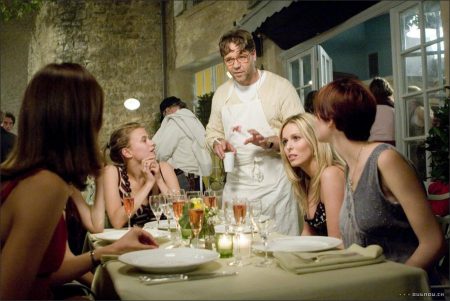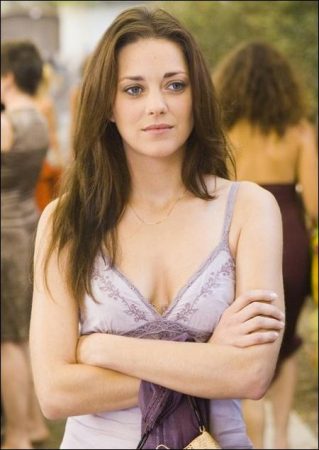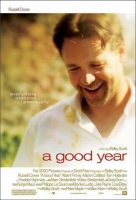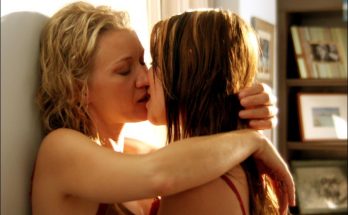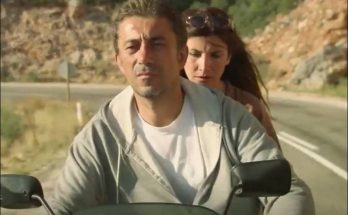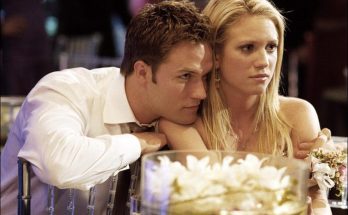A Good Year Movie Trailer. Peter Mayle is a native Brit who abandoned a successful advertising career and reinvented himself as a best-selling author and novelist. He has been writing about the good life in the South of France for over fifteen years. Critics have praised his books, both fiction and nonfiction, calling the writer “the world’s foremost literary escape artist” because of his knack for setting his colorful yarns in a locale one magazine called “the most enticing place this side of paradise.” Mayle’s first book, a memoir called A Year in Provence, has sold over five million copies (in 28 languages) since its publication in 1991.
It was over a bottle of Provençal wine that Mayle (who lives full-time in the Luberon area of Provence) and filmmaker Ridley Scott (who has maintained a vacation home and vineyard there for fifteen years) came up with the idea for Mayle’s breezy 2004 novel A Good Year. “Ridley used to work in the commercials business and I used to work in the advertising agency business in London,” Mayle recounts about his early history with the filmmaker; their friendship stretches back to London’s advertising world of the 1970s. “He was about the best there was, so we would always use his company for shooting commercials if we could afford him. We worked together intermittently in London, and then he went off and did movies and I went off and (wrote) books.”
Almost three decades later, Scott and Mayle had a memorable lunch. “Ridley arrived with a newspaper clipping which reported on new wines in Bordeaux – ‘garage’ wines – which commanded huge prices without a chateau or pedigree. Yet, people paid a fortune for them.”
“I saw this piece in the newspaper business section of the Times about a vineyard in France that was selling garage wine for over £30,000 a case,” Scott recounts about the 1996 clipping, which he still keeps in his files in London. “I was looking for an excuse to come back to France to shoot a film, and this story idea offered the perfect opportunity. “I bounced this idea off Peter Mayle and he said, ‘That would make a good novel,’” Scott remembers. “And I said, ‘You write the book, then I’ll get the film rights.’ So, he wrote the book.”
Mayle labored at his laptop for nine months in 2003, researching the subject in both in his adopted Provence and in one of the world’s renowned wine regions, Bordeaux, on France’s Atlantic coast. Le Pin, located in the appellation called Pomerol, cultivates what many believe to be the best Merlot on the planet.
In the meantime, Scott went off to Morocco and Spain to film his epic saga, “Kingdom of Heaven.” A month after the author turned in his manuscript, a deal was finalized for the film rights – and Scott and Mayle were back in business together.
Scott also suggested the book’s title. “A winemaker has a difficult life. But if he gets it right, he’s had a good year,” says the filmmaker. “That’s what a French winemaker will say: ‘It’s been a good year.’”
Scott chose New York native Marc Klein (“Serendipity”) to adapt Mayle’s novel for the screen. Klein admits that when he accepted Scott’s offer, he knew nothing about wine or Provence. Scott advised Klein to visit the South of France to conduct research and get a flavor of the area. Klein visited Provence in 2004, met with Peter Mayle, and spent almost a year researching the region and the wines.
Adapting Mayle’s novel provided Klein with some formidable challenges. “Peter writes books that are like travelogues,” says the screenwriter. “They’re more about atmosphere – the kind of book one likes to read on vacation, where you want to be swept away to a certain place. We needed to provide additional narrative structure on it. At the same time, we wanted to give moviegoers the same experience they would have reading the book.”
“Peter’s book is a jolly romp,” Scott adds. “It’s very much embedded in the lifestyle of Provence. For the movie, I found that the mechanism for the story needed to be adjusted a little bit, to turn up the volume on the character of Max, who needed to learn an important life lesson. The philosophy that Uncle Henry was trying to instill into this young Max really didn’t take.”
A key change from the novel was the screenplay’s depiction of Uncle Henry, who is only referred to in the novel. After toying with the idea of making Henry a ghostly figure, Scott and Klein decided to depict the character in flashbacks, which, says Scott, “allows us to see the grooming of Max as a child, which pays off as the story unfolds.”
According to Russell Crowe, these flashback scenes accent one of the film’s principal themes: “That as long as people are in your heart, they never die. “I thought that was a wonderful metaphor,” Crowe continues. “When Ridley and I worked on ‘Gladiator,’ the metaphor was death. But on A GOOD YEAR, we discussed the themes in terms of reincarnation – not necessarily from the dead to the living, but having the ‘living dead’, like Max, become revitalized from his experiences in Provence. Every character in this story has a situation that changes his or her life for the better.”
Says legendary actor Albert Finney, who portrays Henry: “Max has these memories of his uncle when he had his summer holidays here as a child. He remembers them favorably, which suggests he had a good time with Henry. Young Max enjoyed his company. The philosophy Henry imparts on the boy has mostly to do with wine in particular, but around that is a philosophy of enjoying life. I think he’s a good influence on the boy.”
Max isn’t the only character that undergoes transformation. Says Crowe: “For every character, something happens within the story that elevates, changes or revitalizes his or her life. I’ve had the same thing happen in my own life, when I married and we had a baby. So it is possible to get yourself out of a rut and change things. That’s what the title refers to – Max’s life. He comes to Provence, reconnects with the memory of his uncle and the things that his uncle taught him, which opens his heart. And his life changes.”
“I think audiences will come out with memories of their childhood after seeing this film,” says 14-year-old Freddie Highmore, who portrays the young Max. “The film will make you look back on the things that have happened in your own life. Young Max didn’t know at the time how important the lessons were that Uncle Henry was giving him. But, as he got older and comes back to visit this place, he realizes how important they have been in making him grow up.”
About the Production
In describing the allure of Provence, author Peter Mayle notes the area has three hundred days of sunshine a year, stunning scenery, remarkably unspoiled countryside, and extraordinary light. “You don’t find that light in many other places in the world. I like the pace of life down here. It imposes a certain rhythm on you, which, when you get used to it, is very pleasant. I feel at home here.”
“I loved waking up in Provence,” adds Russell Crowe, who lived there for two months during production. “There’s something extra special about this particular valley, the Luberon. I think it’s got to do with its fertility. The light there is very similar to Australia — the blues, the pinks and the oranges in the sky. I felt very comfortable there.”
“I loved shooting in Provence…it’s just so beautiful!” adds Ridley Scott, who has owned a vacation home and operated a vineyard there for fifteen years, but hadn’t filmed in France since his debut feature, “The Duelists,” almost thirty years ago. “This shoot was one of my most pleasant experiences.”
Provence itself dates back to 600 B.C., when Phocaean Greeks settled in Massalia, now modern-day Marseilles on the Mediterranean coast, and the region’s most populous city. Its history could also be depicted through the history of the wines introduced by these Phocaeans over 2600 years ago. These ancient vines – the oldest in France – were later developed by the Romans and, thereafter, in the Middle Ages, by monastic communities.
Comprised of 700 villages, Provence has several regional wine growing appellations (covering an estimated 27,000 hectares, or 68,000 acres), all designated as A.O.C. (appellation d’origine controlee), the governmental system established in the 1930s that regulates production and distinguishes quality French wines from table wines. The region boasts extraordinarily favorable growing conditions, or terroir, defined as a combination of conditions in a vineyard site that comprise the vine’s total environment and give its wines what longtime wine writer Matt Kramer calls “somewhereness.”
The Mediterranean climate (year-round sunshine, perfect ventilation from a wind dubbed “mistral” and good rainfall), combined with the terrain’s siliceous soil, favors red grapes like Grenache, Syrah, Carignan, Cinsault and Mourvèdre, much of which is used to produce rosé, the region’s specialty of the estimated 140,000,000 bottles produced annually. White grape varietals common to the terrain include Grenache Blanc, Clairette, Ugni Blanc and Rolle.
Scott based the production in the sub-appellation called Cotes du Luberon (where his own vineyard of eleven hectares is situated), an area whose vines extend over 7500 acres from Cavaillon to Apt in north-central Provence, where 70% are red grape varietals. Most of the vintners (some 80%, including Scott) grow grapes and sell them to cooperatives to produce the local table wine (vin de pays) named for the appellation. However, Scott focused his scouting efforts on several independent vineyards that bottle their own product.
“I looked at almost a dozen chateaux in the area between Roussillon and Bonnieux before coming back to the first one we saw, La Canorgue,” the director states about the location where his company of 125 craftsmen spent most of their nine-week shoot in the Provençal region, which coincided with the vineyard’s prime harvesting season for the next year’s vintage.
Scott chose La Canorgue due to its spectacular western view looking out over the Luberon, and the magical dusk light that bathes the main house in the late afternoon. The film company, under the watchful eye of veteran location supervisor Marco Giacalone (who worked with director Scott on “Kingdom of Heaven”) and French location manager Thierry Zemmour, took over the vineyard and chateau for much of the nine-week shooting schedule in the South of France.
According to Nathalie Margan, who runs La Canorgue with her father, Jean-Pierre, the Margans were hesitant when approached by the production, because the shoot coincided with harvest time. “But, we knew the shoot would be an adventure,” Nathalie says, “so we took on the challenges that came with it.”
Margan describes the experience of huge trucks, vast amounts of equipment and 125 cast and crew swarming all over her property as “initially strange, but ultimately thrilling. It was great to participate. We were asked a few times to suggest how a real winemaker would have done things or what the technical terms were for this or that. They made their movie without disturbing us, and we made a good wine without disturbing them.”
“La Canorgue was interesting,” says production designer Sonja Klaus, noting the production worked hard to restore the chateau for the shoot. “We re-landscaped the ground, putting in statutory and ornamentation. Inside, the whole point was to have this slightly dilapidated, lived-in, comfortable feeling – a feeling of shabby chic…cluttery, lived-in, and homey. We wanted the place to feel as if one was staying with your favorite uncle or your favorite aunt.”
Outside the house, among acres of vines, Klaus had a more daunting task, one she never expected. “Ridley’s words to me, when he first asked me to do it, were, ‘We’re just going to hang out in the South of France and throw a few props around,’” she says with a laugh. “And I thought that sounded nice – until he added, ‘Oh, and by the way, there’s a tennis court. I think we might have to change the swimming pool, or build another swimming pool for all the stunts.’
“There was this field at the back of the house, which was actually in a perfect spot for a tennis court,” says Klaus. “The snag was that it wasn’t big enough to put a tennis court on it. So we actually cheated it, made the tennis court slightly smaller. But, when you watch it on film you won’t know that.”
Another key chateau shooting location was its empty pool, where Crowe got the opportunity to flex both his comedic and physical muscles. “We have a running gag where Max falls into the pool and then realizes he has fourteen-foot sheer walls, and he simply can’t get out,” says the actor. “The pool doesn’t have any water in it, so he has no way of getting out.”
Apart from the many weeks of filming at La Canorgue, Scott and his cinematographer, Frenchman Philippe Le Sourd captured the area’s regal beauty in a series of celluloid French postcard-like images of other quaint villages scattered throughout the hills and valleys of the Luberon. Those included Gordes (four days at Cafe Renaissance, dubbed Fanny’s Café in the film), Cucuron, Lacoste, Avignon and Menerbes (where author Mayle used to reside, and whose former house is still a popular stop on guided tours that frequent the village). The company also spent three days at another local vineyard, Chateau Les Eydins, which doubled for the home of the story’s gruff vigneron, Duflot.
Following the two-month Provençal schedule, Scott relocated the crew to London for the production’s final eight days of filming, at such recognized spots as Piccadilly Circus, the architecturally-stunning Lloyds of London building in the city’s financial district, and the trendy Knightsbridge area.
Like Mayle’s book, the film opens in the London financial world, and Scott liked “the antithesis and juxtaposition of London and Provence. One place is as attractive as the other. London’s a great place to live. Provence is a fantastic place to live. Is it better? No, it’s different. For me, I live in Provence… because I live in London. So, I need one to have the other.”
Adds Peter Mayle: “Knowing Ridley’s eye for landscape, color and composition, I’m sure he’s made the Luberon look every bit as gorgeous as it is. I can’t wait to see the movie.”
A Good Year (2006)
Directed by: Ridley Scott
Starring: Russell Crowe, Albert Finney, Abbie Cornish, Marion Cotillard, Valeria Bruni-Tedeschi, Didier Bourdon, Tom Hollander, Freddie Highmore, Giannina Facio
Screenplay by: Marc Klein
Production Design by: Sonja Klaus
Cinematography by: Philippe Le Sourd
Film Editing by: Dody Dorn, Robb Sullivan
Costume Design by: Catherine Leterrier
Set Decoration by: Bárbara Pérez-Solero
Art Direction by: Robert Cowper, Frederic Evard
Music by: Marc Streitenfeld
MPAA Rating: PG-13 for language and some sexual content.
Studio: 20th Century Fox
Release Date: November 10, 2006
Views: 300

